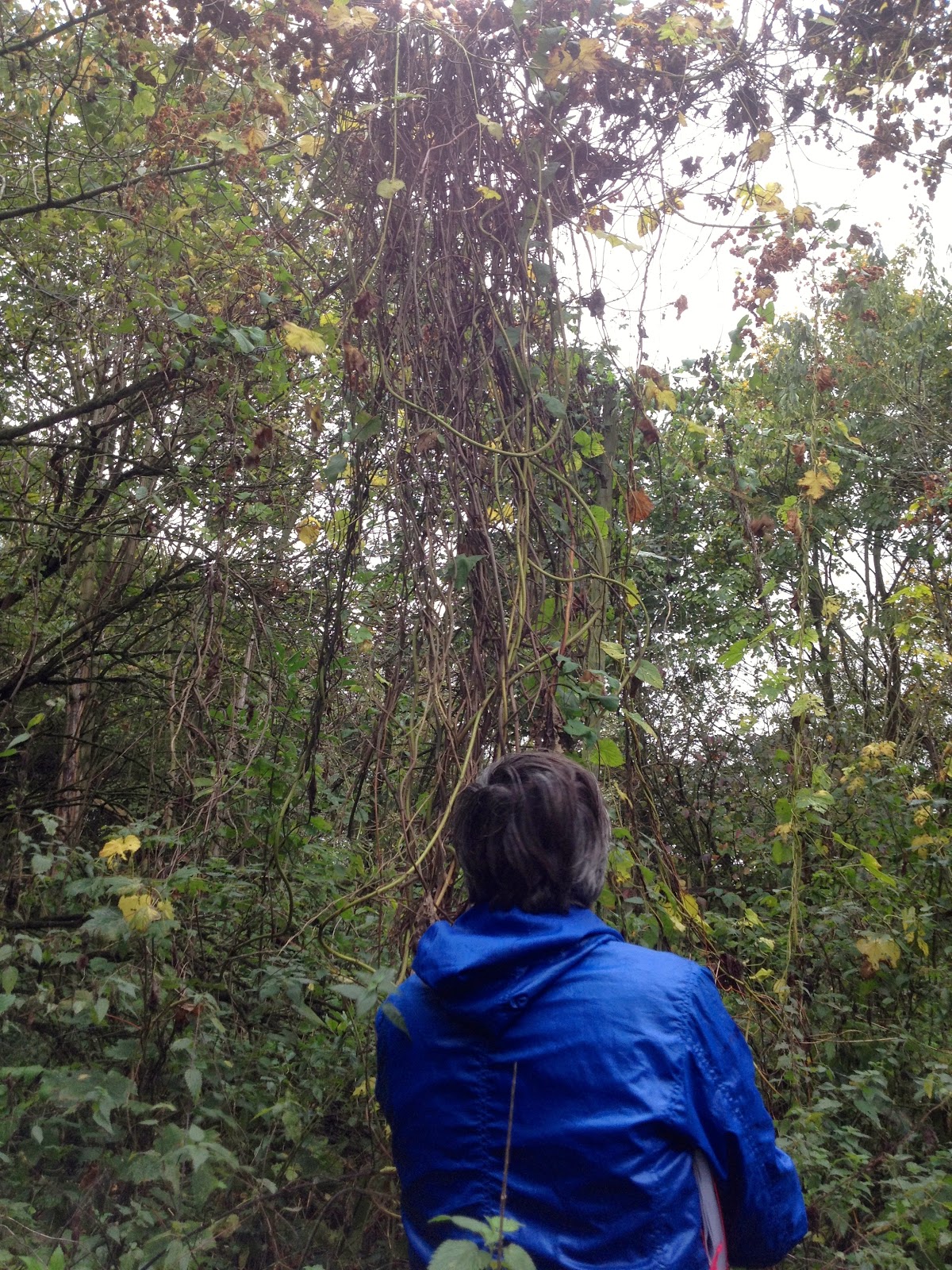Today, Shane arranged a weaving workshop in the Stave Hill Ecology Park. We had a chance to know and collect materials from the nature, then learnt some weaving skills. It is the best workshop I had after I came here. I really enjoyed it. Though the weather was not so good and it was cold, it was still splendid.
Firstly, we went to the shed, where we can work and take rest. These were what I saw in the garden of the shed. I supposed they were made by previous artists or volunteers.
From here, Shane started to show us what kind of plants can be used for weaving, their personality as material, what are available in this season, and etc.
 |
| Bindweed |
 |
| Pollarded willow |
 |
| Brambles |
 |
| Brambles - Blackberry |
 |
| Nettle: old one has straight thick stem can be used as skeleton. |
 |
| Grass - should shake and leave seeds before cutting |
 |
| Dogwood - nice colour, cannot cut this time |
 |
| Dogwood |
 |
| Hazel - cannot cut this time |
 |
| Ivy - cut hanging one |
 |
| Rush |
 |
| Weeping Rose - honestly, I love this one. The colour and tactile are great. But we cannot use. QAQ |
 |
| Weeping rose - long hanging in the air |
 |
| Hops |
Then he introduced the tools that we can use, such as lopper, secateur for cutting small thing, bow saw for willow, hand saw for dead thing, and grass shear, etc.
After a short break, we left in pairs to collect materials. Here are some I collected with Angelique. We are both fond of ivy, and I cut some rush while she went for brambles. Plants have different symbols for her. I just followed my instincts. I love the colour of ivy, showing a strong sense of vitality. It is also neat and flexible, with nice plasticity. As to the rush, I simply like its warm colour. Later I found it was quite hard to work with.
Here, Shane was showing us a basic skill called twining. The straight sticks were Nettles, and the one waved around them were willows.

This was the first one I made.
Half way
Finished. I started from five sticks, and at a certain point, I divided them into two groups, weaving separately. I really love this one. The ivy was absolutely doing well, barely creaking and easy to be handled. The leaves brought the force of life to the work, also becoming another layer of decoration,
Later, Shane showed another technique, which was similar to the first one.
In this one, I tried quite a few plants. From bottom to top were: brambles, willows with leaves, leaves of calamus ( I guess, with sharp little teeth), hops (?) and rush. The brambles cracked easily, and were spiky. Willows were nice, especially the thinner one. The leaves of calamus cut my hands from time to time. From the hops, I decided to make frames first, and then weaved vertically with rush. However, the rush broke easily. It will be nice if I have time and finish it with another material.
Before the end, Shane showed how to tear the bark of willow off. The white colour is astonishing.
These are what we made that day.
This is Amm's. Different from mine, it was neatly done.
This is the third one I made. In this one, I would like to try weaving with a flexible structure. It will be like a basket or hat in the end, but I didn't have enough materials.
Overall, I am satisfied with this workshop and the outcome. Because it is nice to get into nature. I got to know a lot of new knowledges, such as skills, nature of materials, and where as well as how to find them. I was taught another any of manipulating materials. I did crochet before that there is something in common between crochet and weaving. I feel there are so many possibilities of try and play with these skills and materials. Even today, I tried to make some changes based on the basic skills. The difficulty for me probably is neatly making. But it is hard to say it is a weakness or not. It may show my clumsy, but also show my freeness and wildness. It doesn't really trouble me that I think it can be improved by practicing.
Next stop, I am considering weave acrylic sticks by heating them. I bended and twisted some sticks these days. They turned out like glass underwater, which was great. Compared to glass, acrylic is safer, more convenient, less fragile. Not to mention we don't have glass workshop in the Uni. And acrylic is lighter, which means it won't take out so much water.Maybe I can weave some structures for my fantasy landscapes.




























No comments:
Post a Comment